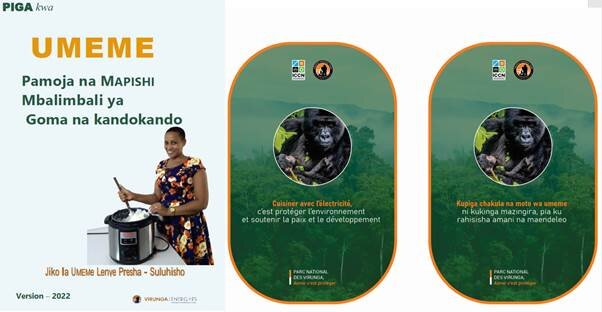Research summary
Globally, over 2 billion people still depend on biomass fuels for cooking, driving deforestation, increasing CO₂ emissions, and accelerating biodiversity loss. At the household level, cooking fuel also places a significant burden, either on household income or on women's time, as they are often responsible for collecting firewood and cooking. The issue is especially critical in Sub-Saharan Africa, where population growth adds approximately 20 million people each year to those relying on biomass.
The recent expansion of reliable electrification, combined with advancements in electric cooking technology, offers a promising opportunity to accelerate the shift to greener, faster, and more affordable cooking solutions. However, research indicates that even cost-effective innovations often encounter low adoption rates due to factors like asymmetric information, entrenched habits, risk aversion, and credit constraints – leading to adoption levels far below the social optimum. This research project seeks ways to overcome these barriers and promote the transition to electric cooking.
Distribution of Electric Pressure Cookers in Goma
We conducted a randomized experiment involving 1,600 households in Goma, Democratic Republic of Congo. In the city of nearly 2 million inhabitants, most households rely on charcoal for cooking, even when they have access to electricity. A typical household spends approximately $30 per month on charcoal, representing 20% of household expenses. About two-thirds of this charcoal is illegally produced in Virunga National Park and trafficked by armed groups, with deforestation now encroaching dangerously on Mountain Gorilla habitat, threatening decades of conservation efforts and the species' survival.
In partnership with Virunga National Park, and its private electricity provider, Virunga Energies (VE), we randomly distributed 1,000 Electric Pressure Cookers (EPC) to VE clients. Given the significant anticipated environmental externalities, we fully subsidized EPC distribution. The results indicate keen local interest in the technology, with 92% of invited households attending the distribution session. Intent-to-treat estimates show that households used the EPC to prepare 44 dishes per month – accounting for 25% of meals – and charcoal use fell by 34%. Households cut overall monthly energy spending by $5.76 but increased electricity purchases by $2.75, enabling subsidy recovery through a ’razor and blade’ model. After just one year of usage, the welfare gains – including lower CO2 emissions and conservation outcomes for the endangered Mountain Gorillas – are almost twice higher than the cost of the subsidy.
Collaborations
This research was co-created by IOB-UAntwerp, Virunga Energies, INRAE and the Centre for Environmental Economics – Montpellier (CEE-M). For the supply of eCookers, we collaborate with SESCOM, a Tanzania-based supplier.
Output
Funding
The field work for this project is funded by the Fund for Innovation in Development (FID), hosted by the Agence Française de Développement (AFD), from the Centre for Economic Policy Research (CEPR) and the Foreign, Commonwealth & Development Office (FCDO) through its joint research initiative on Private Enterprise Development in Low Income Countries (PEDL) , and through the Labex CEMEB from the I-SITE MUSE in France. The staff, notably the fellowships of Nik Stoop and Lara Collart are funded by The Research Foundation – Flanders (FWO).
Pictures of the distribution and demonstration sessions
-
 Picture 1
Picture 1 -
 Picture 2
Picture 2